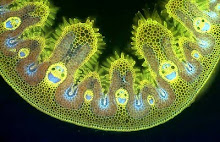Monday, July 16, 2012
Monk'shood, Aconitum napellus, Ranunculaceae
"Helmet-fluore, or the great Monkes-hood, beareth very faire and goodly blew floures in a shape like a helmet; which are so beautifull, that a man would think they were of some excellent vertue, but non est semper fides habenda fronti " wrote John Gerard in his herbal of 1597. And, indeed, appearances are not always to be trusted, because Gerard then went on to describe the dire consequences of eating this poisonous member of the buttercup family. "The force and facultie of Wolfs-bane [another common name for members of the monk'shood genus] is deadly to man and all kindes of beasts .......The symptoms that do follow those that doe eat of these deadly herbs are these; their lips and tongue swell forthwith, their eyes hang out, their thighes are stiffe, and their wits are taken from them."
But as long as you don't eat it, this is a fine plant for the herbaceous border, with the flowers of a violet-blue hue that's shared by wild columbine, another member of the same plant family.
Gerard noted that the plant was also found in alpine meadows "where you shall find the grasse that growth round it eaten by cattell, but no part of the herb it selfe touched, except by certain flies, who in such abundant measure swarme about the same that they cover the whole plant". He then describes how a confection made from twenty of these flies that are immune to monk'shood's poison was an "excellent remedy not only against the Aconites, but all other poisons whatsoever".
Looking at the rather sinister flowers from the side, it's easy to see where the names helmet-flower and monk'shood came from.
The nectaries of the flower are located way up inside the upper petal that forms the hood, where only long-tongued bees can reach it.
The flower is dependent on bumblebees for pollination and the strong bilateral symmetry of the flower means that they have to force their way in through this narrow opening, where they brush against the stamens and stigma as they struggle to reach the nectaries in the hood. The stamens ripen before the stigmas (protandry) and in this picture you can see a couple whose anthers have burst, shed their pollen and whose stamen filaments have elongated. There are six more whose anthers have burst to release white pollen but whose stamen filaments haven't elongated, but the majority of the numerous anthers present have yet to release their pollen.
I've posted some photos of bumblebees visiting the flowers here.
Labels:
Aconitum napellus,
Monk'shood,
Ranunculaceae
Friday, July 6, 2012
Giant Fennel, Ferula communis, Umbelliferae
I've waited seven years for this.
Back in 2007 I bought a small plant of giant fennel Ferula communis, when I was mainly attracted by its delightful, ferny, four-pinnate foliage but also tempted by the promise of a giant inflorescence.
Every year since then it has produced a few magnificent leaves, almost a metre across, but has never showed any sign of flowering. Finally it has summoned up the energy to perform, which is remarkable on two counts.
Firstly, this is a plant from dry, rocky places in the Mediterranean - in countries like Greece - and this is cold, rainy Durham in northern England, in the grip of the wettest summer on record.
This is its natural habitat (image source)
Secondly, according to Marjorie Blamey and Christopher Grey-Wilson's Mediterranean Wild Flowers:
'The stems becomes hard and woody on drying ..... the pith, when dry, burns slowly inside the stem and can be carried alight - it may well have been the original Olympic torch'.
And, of course, this is the year when the Olympics come to Britain. Nice timing!
Other sources claim that the stems were used by Prometheus when he stole fire from the gods on Mount Olympus and gave it to humans.
The stem is robust - and has been used for making furniture, apparently - and the leaf bases sheath the stem in this very distinctive manner.
The inflorescence finally finished elongating when it was close to three metres tall ....
...... then its yellow umbels bloomed. The only way to photograph these is from the upstairs bedroom window......
........... although they do look attractive from below, against the sky.
It's also a very good 'bee-plant' attracting a constant procession of bumblebee visitors to these umbels, each of which is as big as my fist.
Worth waiting for!
Giant fennel is monocarpic and the plant will die after flowering, but I'm tempted to try that stem as a home-made Olympic torch....
Labels:
Ferula communis,
Giant Fennel,
Umbelliferae
Subscribe to:
Comments (Atom)























